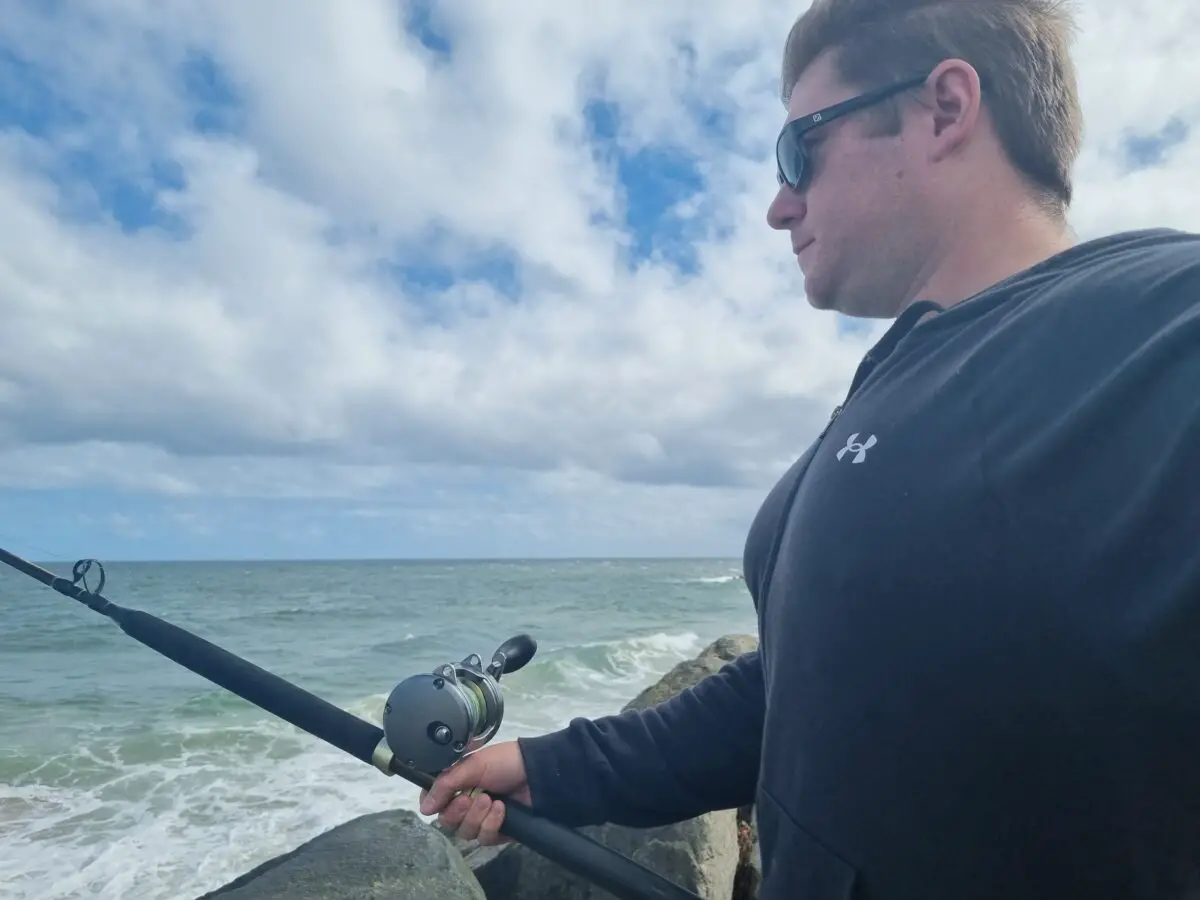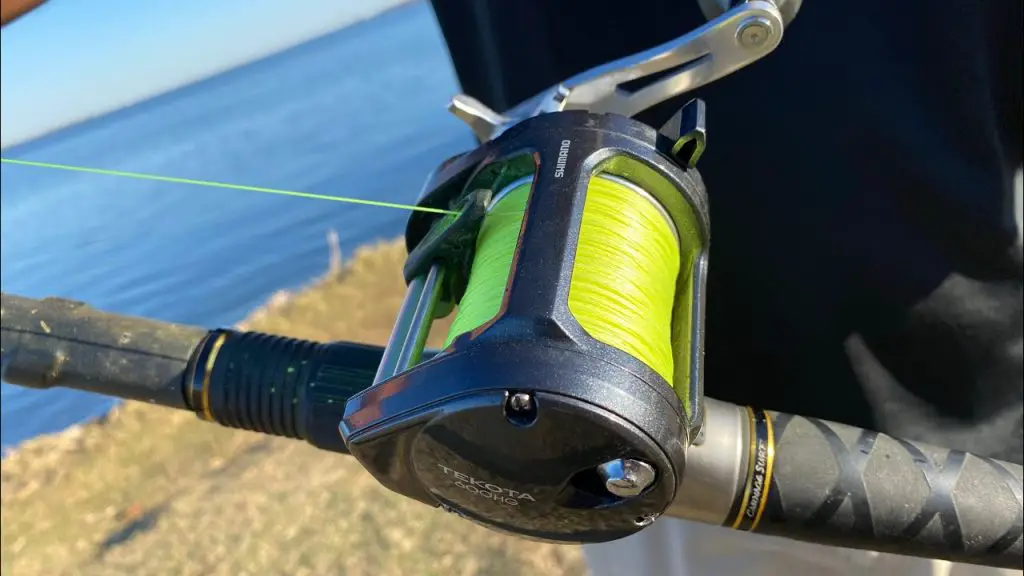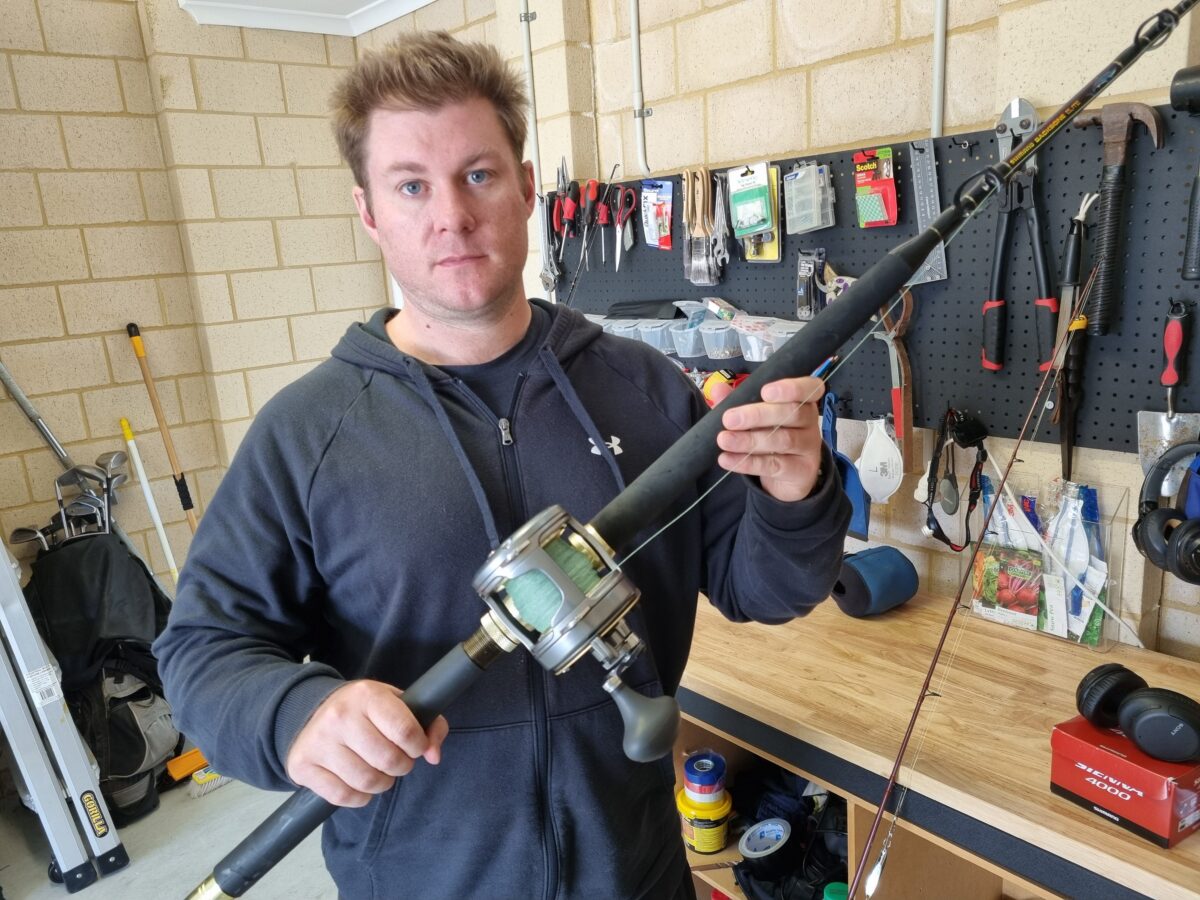To cast a conventional reel, disengage the reel’s free spool by pressing the release button. Hold the rod at a 45-degree angle with your thumb on the spool to control line tension. Perform a smooth, fluid casting motion, releasing your thumb gradually as the lure reaches peak momentum.
Conventional reels are not designed for casting long distances or accurately, but you must cast your bait out a few yards to avoid structure or get it away from your boat.

If you’re an avid angler, you already know that fishing involves a lot of skill. A proper cast-out takes years to perfect and can mean the difference between a bucket full of fish and a day with only minnows biting. Adding to the difficulty of fishing is the fact that there are so many different types of fishing equipment. Working with a conventional reel and rod will be very different from a spinning reel or another reel type.
Casting a conventional reel is deceptively simple but requires some practice. These reels are challenging to cast out because they tend to be heavier than other rod and reel setups.
Following this guide will teach you how to cast a conventional reel and be ready to take your first steps as a serious angler.

Table of Contents
Can You Cast a Conventional Reel?
First, let’s establish if you can actually cast a conventional reel—and what casting even is.
Casting is a general term for throwing the fishing line, hook, and bait out on the water. There are many different techniques fishermen use to cast, depending on the angling style, rod design, and personal preference, but the act is the same.
You can cast a conventional reel just like you would most other reels. However, it will be harder than casting a baitcasting reel, for example. Conventional reels tend to be heavier, so most fishermen use them when dropping the line in and not casting. It takes time, practice, and energy to master casting with a conventional reel because it is a bigger piece of equipment.
While casting a conventional reel is a bit harder, it is worth it if the purpose of your fishing trip demands casting. It’s good to have this skillset under your belt just in case you need it.

How to Cast a Conventional Reel
Casting a conventional reel looks a little different from how you would cast a reel designed for this purpose.
1. Set Up Your Reel
The first step before any casting is to set up your rod and reel. Set up your line so it sits on the spool. Conventional reels come with one of two types of spools: fixed or free. In both, the set-up is similar: you wind the line around the spool, then attach the reel to the rod.
Make sure you use the right conventional reel for your rod and the fish you want to catch.
2. Adjust the Drag
When you cast the line, you only want some of it to let go and land in the water. That allows you to control the line and reel it out or in when you get a bite. You don’t want all of your line to flop in the water the second you cast your reel.
You need to adjust the drag to prevent that on a conventional reel. Make sure that there is enough give to give you space but that you will still have line left on your spool.

3. Flip into Free Spool
On the side of the reel is a take-up, or a little lever that dictates the initial burst of your cast. When your rod is resting, this blocks the line from just spinning out. Flip the lever when you are ready to cast to allow the line to flow freely.
You also want to press your thumb firmly over the fishing line at this step. That prevents the line from spinning completely out of control and adds to the drag.
4. Cast the Rod
Finally, you’re ready to cast.
You start by going in the opposite direction. Put the weight on the shore or the deck of the boat, backwards away from the water. Make sure that the line is taut. Hold your non-dominant hand at the bottom of the fishing rod. Your dominant hand is near the reel on the opposite side of the rod, holding down the line.
Then, start the casting motion by pulling with your non-dominant hand from the bottom of the fishing rod and pushing with the other hand. This creates a powerful leverage that flings the line into the water. Make sure you are casting over your shoulder.
5. Stop the Line
You don’t want your line to spool out completely. Once your weight hits the water, stop the line by pulling on it with your thumb.
Common Mistakes to Avoid
Many amateur fishermen get confused when using conventional rods to cast since that is not what these rods are designed for. Some common mistakes include:
- Fiddling too much with the spool tension and drag
- Casting too hard
- Not finishing the cast
- Spooling improperly
Good preparation eliminates many of these mistakes. Setting your spool tension and winding enough line onto your spool before you make your first cast prevents you from causing backlash.
Finishing your cast properly also helps. You must always keep your thumb on the line and be ready to stop the line from spooling out when it reaches the water.
How to Avoid Birdnesting Knots
Birdnesting knots happen when fishing line gets tangled, and it is a pain to unspool. Birdnesting knots happen when casting conventional rods because these rods are prone to backlash and tangling.
To prevent birdnesting, make sure your line is set up properly. Don’t overfill your spool; level the line against the reel and rod. If you don’t have level-winds, you will have to do it properly.
Then, make sure your casting technique doesn’t cause too much of the line to spool out. Casting too hard or not braking in time will cause knots.
If all else fails, keep a backlash tool on hand to help you untangle your line.
Final Thoughts
Conventional reels are not designed for casting, but you can still use this technique for conventional reels as long as you have good casting technique, stop the cast in time, and avoid backlash.
